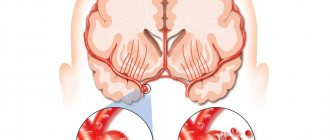Headache is a common problem faced by city residents. It occurs due to many reasons, including the environment, stress, malfunctions of the body, disturbed emotional balance, etc.
Regular yoga classes help you relax, restore your health, and make your thinking positive. Sets of exercises relieve muscle tension that negatively affects blood circulation in the brain. Yoga for illnesses helps to cope not only with the symptoms, but also relieves the causes of headaches.
Impact principle
Modern pharmacology offers a wide range of drugs that almost instantly eliminate pain and spasms. But this only masks the problem and prevents the organs from sending signals. Moreover, medications have side effects that lead to other problems.
A headache is a kind of signal that tells a person that the body is not working properly. Very often, spasms appear due to overstrain of the neck and back muscles. This is a common problem for modern people who spend most of the day sitting. Yogic exercises help relieve tension, normalize blood pressure and prevent headaches.
REFERENCE! Asanas and breathing practices eliminate the effects of stress, which also causes headaches. Yoga therapy focuses on gradual relaxation and slowing down. Complexes of various poses help improve the supply of oxygen to the brain and reduce the likelihood of migraines.
Can yoga help with migraines?
Yoga is a mind-body therapy that originated in ancient India. People all over the world now practice it, which involves postures, meditation and breathing exercises. Research has shown that yoga can reduce stress, anxiety and depression.
Stress is an important and common migraine trigger. By loosening tense areas such as the neck, head and shoulders, yoga can prevent the development of migraines or relieve symptoms.
Research suggests that yoga may be a complementary practice that helps treat migraines. However, someone who experiences migraines should avoid poses that put a lot of strain on the neck.
Preventive asanas
The main yoga asanas, which allow you to avoid pain or significantly reduce the number of attacks, are aimed at relaxing and healing the areas of the body that provoke pain.
You should start the exercises by warming up your neck. Sit comfortably on a chair or on the floor with your legs crossed and your arms freely at your side. Raise your right hand above your head and reach your left ear. Slowly tilt your head to the right side. Apply light pressure with your hand and resist it with your head. After 60 seconds, straighten up and do the same on the other side.
IMPORTANT! First of all, attention is paid to the neck, spine, shoulder girdle and forearms.
Dog pose or dolphin pose helps release tension in your forearms and stretches your upper back. It is important to keep your breathing free and not strain your neck. Start on your knees, hip-width apart, with your hands on the floor and your wrists shoulder-width apart. Take a breath. Lower your elbows to the floor, slowly lift your hips and exhale. The heels should be parallel to each other. It is not necessary to place them on the floor if the stretch does not allow you to do so. Relax your neck, look at your feet and hold the pose for 3-5 breathing cycles.
Camel pose. Get on your knees, bend back, rest your palms on your feet. Do not push your hips forward; they should be perpendicular to the floor. Don't strain your neck, breathe freely. Hold the pose for 3-5 breathing cycles. This asana helps open the duct of the vertebral arteries and prevents headaches due to tension in the neck.
Exercise effectiveness
These three exercises must be performed regularly to avoid headaches. They are quite simple, accessible to a person with any level of training.
- The first exercise relaxes the forehead area, engages the legs and arms, and relieves tension from the neck muscles. To perform it, you will need a chair, the back of which must be placed against the wall and covered with a blanket. Stand facing a chair and press your palms against the wall, raising them just above your shoulders. Leave your feet hip-width apart. Step back until your arms are parallel to the floor. Rest your forehead against the back of the chair and lightly pull the top of your head toward the wall. If you are bothered by severe muscle tension in your legs, bend your knees slightly. Hold the pose for 1-2 minutes and slowly come out of it. Calm your breathing in Mountain Pose (Tadasana).
- The second exercise is similar to the inverted dog pose. Don't change your chair position. Place your palms on the seat and step back until your arms and torso are in line. Reach the top of your head towards the wall, stretching your neck. After 1-2 minutes, smoothly exit the pose and perform Tadasana again.
- To perform this asana, you must use a special block. It helps calm the mind. Get on all fours with your heels touching the wall. Place a block on the mat and assume the Downward-Facing Dog position. Place the upper part of the forehead on the brick. Breathe freely, do not strain your throat. After 1-2 minutes, relax in child's pose.
Reference! Yoga also helps eliminate and prevent the manifestation of unpleasant symptoms of hemorrhoids.
Exercises for headaches
- Complex treatment, rapid onset of noticeable improvements.
- Doctors with more than 15 years of experience.
- Individual physical therapy complexes for each patient.
There are different types of headaches, caused by different causes, and as a result, each requires different treatment approaches. As a rule, the basis of therapy is medications, some of which are aimed at stopping attacks, and others at reducing the frequency and duration of relapses. However, as practice shows, an integrated approach often helps to achieve the best effect, when drug treatment is combined with massage courses, various manual techniques, and physiotherapy. Therapeutic exercises also play a significant role in improving the condition of such patients.
Below we will talk about physical therapy approaches for different types of headaches and share useful recommendations from our doctors.
Therapeutic exercises for cervicogenic headaches
Cervicogenic headaches occur due to problems with the cervical spine. This can be the consequences of acute injuries or various chronic diseases, such as cervical osteochondrosis, intervertebral hernia, degenerative changes in the joints between the vertebrae, incorrect posture, weakening of the neck muscles.
With pathologies of the spine, compression of the nerve roots occurs, muscle spasms occur, blood circulation and lymph outflow are disrupted. All this leads to pain that initially occurs in the neck and then spreads to the suboccipital region, to the head.
Sometimes it’s not the vertebrae at all: headaches and neck pain develop due to myofascial pain syndrome
.
This is a condition in which areas of spasm occur in the muscles of the neck and shoulder girdle - so-called trigger points
. Because of them, pain bothers me.
Of all types of headaches, it is with cervicogenic headaches that therapeutic exercises help best. At the Bobyr Clinic, an experienced specialist will prescribe you an individual complex of physical therapy and recommend exercises that you can perform independently at home.
What physical exercises help cope with cervicogenic headaches?
First of all, before starting exercise therapy, it is important to determine why the patient is bothered by headaches. You need to make sure that the symptom is caused by damage to the cervical spine, and not by diseases such as migraine, cluster headaches, tension headaches, arterial hypertension, etc. After all, depending on the causes of the pathology, the set of exercises will also differ.
As a rule, a complex of therapeutic exercises is aimed at correcting disorders that are found in the majority of patients suffering from cervicogenic headaches:
- Constantly tilting the head forward with an “extended neck.” This is the position that office workers are often in at the computer, and it is they who have the most common problems with the cervical spine, which lead to pain.
- Weakness in certain groups of neck muscles, especially the deep flexors.
- Restriction of movements in the neck.
- Poor posture.
All this is individual. Each patient has his own set of disorders, and the doctor must correctly identify them and create a physical therapy program that would provide the most effective correction.
What exercises help prevent cervicogenic headaches?
The simplest exercises that will help stretch your neck, relieve muscle spasms and improve blood flow are bending and turning your head in different directions. If you work with a computer for a long time, you need to periodically - about once an hour - get up and warm up. It is useful to simultaneously perform exercises for the muscles of the shoulder girdle - swinging your arms forward and to the sides, rotating the shoulder joints.
At the same time, it is important to properly organize the workplace
.
Use a comfortable office chair, preferably one with armrests. Position your computer so that the top edge of the screen is at eye level so that you don't have to tilt your head when looking at it. Very often, the cause of headaches in office workers is not only problems with the neck, but also the so-called computer vision syndrome
due to eye strain. Therefore, the eyes also periodically need rest and exercise. Move away from the computer and look somewhere in the distance, out the window, for some time. Turn your eyes in different directions, describe circles, “eights”, “crosses” with them. This will help relieve tension from the muscles that are responsible for the movements of the eyeball.
Lift weights correctly
. When you have to lift a heavy load, use your hip joints rather than your spine. Don't bend over, but squat. Your spinal column should not work, your hip and knee joints should work. Spinal flexion primarily affects the lower back, but the neck also suffers. When you hold the weight, press it towards you. This will help prevent excessive curvature of the spinal column and excessive stress on it.
Sleep on the right pillow
. For many people, cervicogenic headaches are caused by uncomfortable positioning of the head and neck during sleep. You need to use a pillow that supports your head well. At the same time, your neck should not strain, your head should not fall down, but be in a position as if you were standing. If you are used to sleeping on your back, then the pillow should be low so that your head does not rise or bend forward, and if you are on your side, it should be high enough so that your head does not fall towards your shoulder.
You can buy an orthopedic pillow, but you need to choose it correctly, because otherwise the problem with your neck and headaches will only get worse. It is advisable to first consult a specialist.
Special orthopedic mattresses help ensure complete relaxation of the entire spinal column during sleep and prevent muscle spasms.
By the way, Dr. Bobyr has his own line of orthopedic mattresses, and our doctors will be happy to help you select them
.
Therapeutic exercises for migraines
First of all, you need to understand that migraine is inherently a disease of the central nervous system. The main disturbances in this case occur in nerve cells, their processes and blood vessels, which leads to pathological pain impulses.
The main treatment for migraine is drug therapy. Certain medications help manage pain and reduce the frequency and severity of attacks. The doctor gives each patient recommendations regarding lifestyle - they also help improve the condition.
However, in parallel with drug therapy, physical exercise also brings certain benefits. Therapeutic exercises for migraines help to cope with pain and disorders of the muscles and cervical spine, which can also contribute to the development of headaches. Thus, the effectiveness of exercise therapy for migraine headaches directly depends on the degree of involvement of the musculoskeletal elements.
First of all, before starting therapy, it is important to carry out a differential diagnosis, to find out whether the patient suffers from migraine pain or another type. A characteristic sign of migraine is that it most often covers only half of the head, and the attack is often preceded by a complex of specific sensations - an aura
.
Therapeutic exercises help improve the condition of a patient suffering from migraine due to the following effects:
- Normalization of muscle tone in the neck, shoulder girdle, and suboccipital muscle group.
- Elimination of muscle spasms.
- Improving blood circulation and lymph outflow.
- Improving the condition of the cervical spine, restoring mobility.
- Normalization of posture.
- Increases physical strength and muscle endurance.
The duration of treatment for migraine, including a course of physical exercise, depends on the severity of the disease. In mild cases, significant improvement can often be achieved within a few days.
Is exercise generally beneficial for migraines?
Some studies have been conducted on this topic, and they have shown that patients who lead a sedentary lifestyle experience more headaches and are more likely to develop a migraine exacerbation. The inverse relationship has also been proven: people who regularly perform gymnastics complexes experience attacks less frequently, and the intervals between exacerbations become longer. This gives reason to consider physical activity as an important measure for the prevention of migraine headaches.
People with migraines are recommended to do 150 minutes of moderate-intensity exercise per week or 75 minutes of vigorous-intensity exercise per week. This is the bare minimum
.
However, not everything is so simple here. There are studies that have shown that physical activity can also act as a provoking factor. Many people who suffer from migraines have reported that they often get headaches soon after doing exercise or physical work.
Therefore, even therapeutic exercises should be treated with caution. It is important that the exercise therapy program is drawn up by a doctor who has the appropriate knowledge and experience. If the patient's condition worsens after exercise, it should be stopped or the intensity reduced.
Experienced medical specialists work at the Bobyr Clinic; our therapeutic exercise complexes are compiled individually, taking into account the nature of the disease and the severity of its course. Make an appointment with our doctor
.
Therapeutic exercises for cluster headaches
Cluster headaches are so called because they occur in series - clusters
. Typically the cluster lasts from several weeks to several months, and then a period of remission occurs. In general, cluster pain is quite difficult to deal with; there are no completely effective treatment methods. In this case, the pain can be so severe that in some patients it leads to suicide attempts.
Some studies have shown that intense exercise can help relieve cluster headaches. But in general, exercise therapy has not gained much importance in the treatment of this disease. Therapy is based on the use of medications that help reduce the intensity of headaches, shorten the duration of the attack and prevent and delay the development of new exacerbations.
However, such patients can be recommended to exercise. Physical activity is generally beneficial for the body; it helps improve overall well-being and psycho-emotional state.
Therapeutic exercises for tension headaches
Tension headaches are a fairly vague group of pathologies. In fact, it includes all headaches that are of non-migraine origin and for which no other causes have been identified. Currently, two leading factors are considered among the causes of tension-type headaches: frequent, chronic stress and disorders of the musculoskeletal system (thus, the above-described cervicogenic headaches can be considered a type of tension-type headaches).
First of all, eliminate potential triggers!
Before talking directly about therapeutic exercises, we will list the main factors that can provoke tension headaches and that need to be eliminated:
- Hats. Tight hats, helmets and jewelry that put pressure on the head are trigger factors and can provoke an attack.
- If you often hold your mobile phone between your ear and shoulder, this also leads to muscle strain. The solution is to get a headset or headphones.
- If you often work a lot with a computer, you need to properly organize your workspace. We have already talked about this above.
- Do not use glasses with bifocal or trifocal lenses when working with a computer. Because of this, you have to often tilt your head and hold it in this position for a long time, which, of course, has a bad effect on the spine and neck muscles.
- Maintain correct posture.
- Try to avoid stress. Easy to say - but often very difficult to implement in practice. Stress is an integral part of the lives of most modern people, especially residents of big cities. If you often feel nervous, you can seek help from a psychologist, practice various relaxation techniques, and breathing exercises.
- Give up bad habits. Smoking is one of the factors that aggravates the condition of people suffering from headaches and neck pain.
What exercises help relieve tension headaches?
The benefits of exercise therapy for tension-type headaches are best demonstrated by the results of one study published in 2007. Scientists have found that regular exercises aimed at strengthening the neck muscles are effective in helping to cope with neck pain. Three years later, a new study found that this statement was also true for headaches. In addition, some experts note that exercises for the muscles of mastication may also be beneficial, since changes in these muscles also play a role in the occurrence of headaches.
It should be noted that dynamic and energetic exercises for increasing the strength of the neck muscles have the greatest positive effect. Stretching exercises also showed effectiveness, but not as high.
In order to get rid of tension headaches and neck pain associated with disorders of the musculoskeletal system, it is usually not enough to take just one short course of exercise therapy. Yes, exercises, for example, for 10 days under the guidance of an experienced doctor can improve the condition, but in order to get lasting long-term results, you need to perform a complex of gymnastics regularly, for a long time!
If you are just starting out, then in general terms the exercise program for the muscles of the neck and shoulder girdle will look like this for you:
- Start with simple normal movements: turning your head, bending forward, backward, to the sides. There is no need to do them with force and try to achieve maximum amplitude. The key is lots of repetition.
- Then you can move on to endurance exercises.
- At the third stage, exercises are added to train muscle strength.
In addition, for any headaches, general strengthening exercises are useful, that is, the most common gymnastics, which is recommended for all people to do in the morning. It helps improve general condition, increase vitality, normalize mood and sleep.
Make an appointment with a doctor at the Bobyr Clinic, take a course of exercise therapy under the guidance of our experienced specialist. At the end of the course of treatment, the doctor will recommend exercises that are suitable for daily performance in your case.
.
Self-massage for tension headaches
For tension headaches, massage of almost any area of the face or head can help to some extent. But massaging some specific areas is especially effective:
- The suboccipital region is at the back, where the border between the head and neck is located.
- Temporal areas - where the temporal and masticatory muscles are located.
- The trapezius muscle is located at the top of the shoulder. It is very often the source of pain in the temple area.
- The muscles that are located on the sides of the cervical vertebrae. You need to focus on the very top ones, those located under the back of the head.
- Upper back muscles: often due to their tension, pain occurs in the neck, which then “spreads” to the head.
Self-massage helps relieve headaches, but you need to remember that it does not always help, and in some cases it can even be dangerous. For example, if you intensively knead the muscles of the neck and shoulder girdle with hypertension, this can lead to a sharp increase in blood pressure and a hypertensive crisis. Therefore, it is better to take massage courses from an experienced specialist - this type of treatment is also available at the Bobyr Clinic. We have very good massage therapists.
Yoga for headaches
There are different types of headaches, they have different, sometimes not fully understood, causes. However, if you evaluate the statistics, it turns out that in most cases the main provoking factor is tension in the muscles of the neck, shoulder girdle and back. And in this case, yoga can be a good help, because yoga poses are aimed at relaxation and stretching.
In addition, yoga improves cardiovascular function and helps reduce stress levels, which also contribute to muscle cramps.
The following asanas help best against headaches (as well as neck and back pain):
- Cat pose
. Get on all fours. As you inhale, arch your back upward. As you exhale, return to the starting position. This helps relieve intervertebral discs and eliminate pinched nerve roots. - Eagle pose
. Sit cross-legged. Stretch your arms forward and bend your elbows. Then intertwine your hands so that they are wrapped around each other. This exercise is good for relieving shoulder tension. - Bend forward
. Sit on the floor with your legs together and extended. Lean forward, try to bend as much as possible, clasp your feet with your hands and sit like that for a while. This exercise helps improve the condition of not only the spine, but also the cardiovascular system. - Child's pose
. Sit on your knees, bend forward all the way to the floor, extend your arms forward and place them on the floor. This asana helps relieve tension in the back and shoulders, calm thoughts, and relax. - Viparita Karani
. You need to lie down near the wall, press your buttocks against it and stretch your legs up, pressing them against the wall. This helps improve posture or combat fatigue. - Apasana
. Lying on your back, bend your knees and hips, bringing them towards your stomach. Relax and lie there for 30–60 seconds. Then return to the starting position. - "Head to Knee"
. Sit on the floor, bend your left leg at a 90-degree angle and extend your right leg. Raise your arms up, then bend over your extended leg and reach for your toes. Hold for 60 seconds and then repeat with your left leg extended. During this exercise, blood flow to the head and face increases. - Corpse pose
. Yogis themselves call this asana the simplest and at the same time the most difficult. You need to lie on the floor, spread your straight legs and arms slightly to the sides, and try to relax as much as possible. Tension should not arise in any part of the body, in any muscle - all attention should be focused on this.
Of course, we should not forget that yoga cannot become an alternative to physical therapy and other methods of treating headaches.
Not everyone is allowed to perform asanas. If you suffer from serious diseases of the spine, cardiovascular system or other organs, you should first consult a doctor. Author: K.M.N., Academician of the Russian Academy of Medical Sciences M.A. Bobyr
What to do if your head already hurts?
If you still have a headache or feel it approaching, try Viparita Karani asana. In this case, it should be performed not in its full form, but in a slightly modified form.
- lay a rug or blanket on the floor, sit sideways to the wall and bend your legs;
- lie on your back, bend your legs and place a sandbag on your feet, then straighten your legs, pressing them as much as possible against the wall;
- place the second bag of sand over your eyes and place your arms along your body;
- Relax completely and do not move for 15-20 minutes.
Forecast
Currently, doctors do not have a specific treatment for migraine, but symptomatic treatment can relieve symptoms. A person may try different treatments and medications to find one or a combination that works for them.
Regular yoga practice can reduce the severity and frequency of migraines when combined with standard medical treatments, including:
- Painkillers
such as ibuprofen. People should take these medications at the first sign of a migraine attack. - Specific drugs
to relieve migraine pain, such as
triptans
, which constrict blood vessels in the brain. Dilation of these blood vessels can contribute to migraines. - Antiemetics
, which help with nausea and vomiting. - Acupuncture
. Research shows that 10 sessions over 5-8 weeks can help with migraine symptoms. - Transcranial magnetic stimulation
(TMS) involves using a small electronic device to deliver magnetic pulses through the skin into the scalp.
Breath work
Nadi Shodhana helps cleanse the energy channels of the body. To do this, sit with your back straight and relax. Use your thumb to close your right nostril and begin to inhale slowly through your left. After this, exhale even more slowly. Repeat the same with the other nostril. Do the practice for 1 minute.
Sheetali is a cooling breath that allows you to feel relief from headaches.
Sit cross-legged. Stick your tongue out of your mouth a little and roll it into a “tube”. Begin to slowly inhale through it and exhale through your nose, closing your mouth. Repeat 3-4 times without haste. REFERENCE! Pranayama or breathing exercises in yoga provide relaxation, relieve tension, improve blood circulation and calm the nervous system. They help get rid of headaches caused by stress or an immobile lifestyle.
Scientific works and evidence
Recent research confirms that yoga can reduce migraine symptoms along with standard medical treatment.
In a 2021 study, scientists concluded that yoga, when combined with standard medical treatment, can improve people's quality of life and reduce migraines.
Previous studies in 2021 confirmed these findings. The researchers found that in 161 participants, yoga as a complementary therapy was superior to medical treatment alone and could offer a cost-effective and safe way to treat migraines.
A small study published in 2021 found that yoga combined with Ayurveda (a holistic form of medicine originating in India) reduced migraine symptoms and pain intensity and improved quality of life.
Earlier in 2014, a study conducted on 60 people found that a yoga intervention significantly reduced the frequency and intensity of headaches. Scientists have also found that yoga improves the autonomic balance of the heart.
Poses for Migraine Relief
Migraine is a neurological disease that is often accompanied by severe headaches. If you feel an attack coming on, perform Viparita Karani. But if you haven’t had time to do this, then try the practice of relaxation.
Legendary meditation course without payment We recommend! The most popular meditation course for beginners in Russian. More than 100 thousand people have already learned to meditate. Try it yourself. Read more.
Shavasana (dead man's pose) is suitable for this . It involves conscious relaxation of the body, relieves tension and restores strength. To complete this you will need 3 blankets and a bandage.
Fold the blanket into strips - one 30 cm wide, the other 70 cm long. Place one of them under the back area. Sit with your back to this stand with your knees bent. Wrap your head in a bandage or some kind of bandage.
Smoothly, supporting yourself with your hands, lie down. Your shoulders should only lightly touch the blanket under your head. Place your hands relaxed at a short distance from your body, palms up.
Raise your knees slightly and “throw” them onto the floor in a relaxed manner; do the same with your pelvis and chest. Close your eyes, take a deep breath in and out, and relax.
Feel each part of the body and relax it: start with the feet, move up the legs, then pay attention to the pelvis, back, abdomen, chest, hands and forearms.
It is very important to relax your neck, back of your head and face. Keep your breathing calm and observe the sensations in your body. ATTENTION! Audio accompaniment for performing guided Savasana.
After complete relaxation, try to let go of thoughts and remain in the pose for at least 5 minutes. When finished, bend your knees, turn over onto your right side, lie there for a while and slowly rise up.
Tips for preventing migraines
Certain foods, dehydration and lack of sleep can trigger migraines. People should identify their migraine triggers and keep a diary to remember what triggered previous episodes.
Neurologists may prescribe certain medications to treat migraines, such as anticonvulsants. Doctors may also prescribe blood pressure medications and antidepressants to help prevent migraines.
Other migraine treatments include botulinum toxin type A (Botox), a nerve toxin that paralyzes muscles, and acupuncture.










